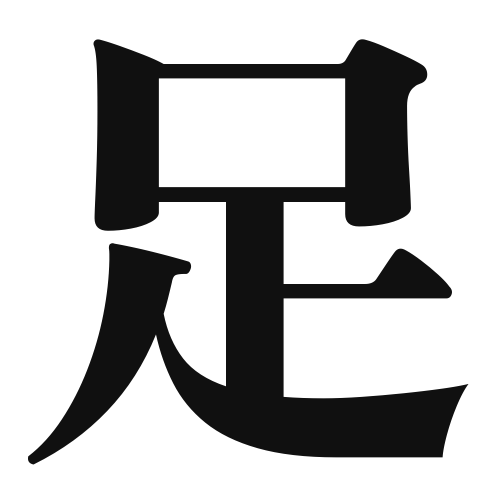1. Overview of Meaning
The kanji “足” (pronounced “ashi”) primarily means “foot” or “leg.” It can also refer to “sufficient” or “to add,” depending on the context.
2. Formation and Radical
Formation of the Kanji: The kanji “足” is a pictogram, originally depicting a foot. It visually represents the concept of walking or movement.
Radical: The radical for “足” is also 足, which is used in other kanji related to feet or movement.
3. Examples of Usage
Common Words and Phrases:
- 足りる (たりる, tariru) – to be sufficient
- 足音 (あしおと, ashioto) – footsteps
- 足元 (あしもと, ashimoto) – at one’s feet
Example Sentences in Daily Conversation:
- 私の足が痛いです。 (わたしのあしがいたいです。) – My foot hurts.
- このお金で足りると思います。 (このおかねでたりるとおもいます。) – I think this money will be sufficient.
4. Synonyms and Antonyms
Similar Kanji:
- 脚 (きゃく, kyaku) – This kanji also means “leg” but is often used in a more formal context or to refer to the legs of furniture.
Antonyms:
- 頭 (あたま, atama) – meaning “head,” which is the opposite of “foot” in terms of body parts.
5. Cultural and Historical Background
Relation to Japanese Culture: The concept of “足” is significant in Japanese culture, especially in traditional practices like martial arts, where footwork is essential.
Proverbs and Idioms:
- 足元を見られる (あしもとをみられる) – “to be taken advantage of,” literally meaning “to be seen at one’s feet.”
